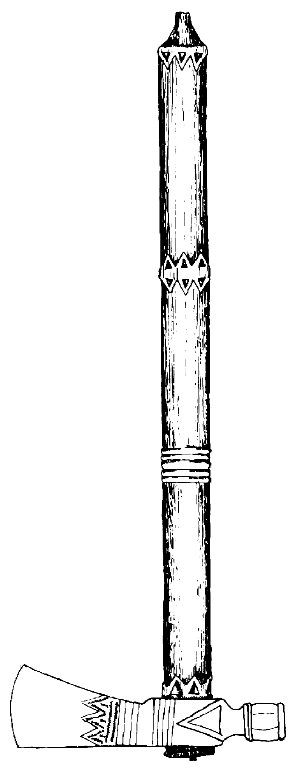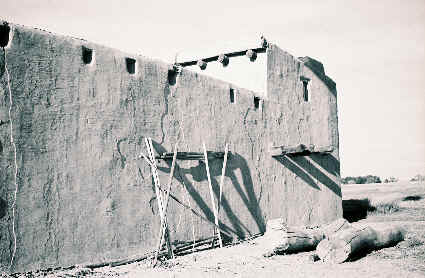|
|
||||
| .... |
|
.... |
_______________________ "AN ESTATE OF A MOUNTAIN MAN"
|
.... |
|
"Today, we always seem to struggle with the question, really what did the average mountain man carry with him wherever he went? Did he look like the ones we see at the rendezvous today? Are the things we use appropriate for the characters which we portray? In volume three, of Leroy Hafen's eight book set on "The Fur Trade Of the Far West" (pages 27-37), we find a interesting article about a early trapper/ trader. His name was James Baird. James was born in 1767 in Pennsylvania. Was a blacksmith by trade in St. Louis, and in 1812, along with three other men started transporting and selling trade goods in what is now New Mexico. Their first shipment was worth about $10,000. But, the shipment was confiscated from them and they were detained in New Mexico by the governor. In 1820, all foreign prisoners were set free, and Baird stayed in the country. But enough of that- James Baird died on November 4th 1826 in El Paso. And a inventory was made of his belongings at that time, with witnesses to approve the writing to be correct. Here is the list : "List of the chattels and goods belonging to the estate of James Baird, deceased:" one pair of saddlebags containing cash $47.75 a small book containing papers of agreement. obligation, receipts and c. to the amount of nineteen. (dollars ?) strand white beads nutmeg one Cwt. of thread one silk strand razors, a hone, strope and shaving box pieces soap phial calomel pr. suspenders box sewing needles two foot rool (rule) empty phials small shaving glass gun, bullet moulds, shot bag and powder horn pistol, butcher knife and bullet mould small bag of coffee saddle, bridle and spurs buffalo robe blanket hat, coat and vest 1 spring lancet 1 hand clock pr pantaloons pr drawers pr stockings pr shoes 2 black silk handkerchiefs 2 mules A small buffalo skin containing: 21 butcher knives 2 boxes containing four nutmeg 1 flask gunpowder 1 small bag coffee 1 pound neck beads 2 pieces shaving soap 1 dozen common combs 1 small canister tea 1 dozen pen knives 8 small iron handled pocket knives A small Valice containing
|
pantaloons- 1 neck handkerchief 1 bottle mustard 1 bed comforter 1 dozen awls 1 green flannel shirt 1 file 1 guinga (gingham) shirt 1 paper fish hooks 2 flannel shirts 1 small paper camphor 2 par flannel drawers 1 small paper cream tartar 2 dozen woolen stockings 1 bottle snuff 1 hone half quire writing paper 1 small bag shot This inventory was taken in the presence of the undersigned immediately after the death of the late James Baird, El Paso, November 4, 1826. John W. Rogers John G. Parrish W. Aitken Edward Beavers Julian Bernal Paul Anderson Some of the things listed above are quite common. But others are unusual in the estate. As you can see, a portion of the above are for trading. Then a separate part are for his own personal use. He did dress southwestern. (spurs and pantaloons) Who would he of traded with? The Spanish and Indians. Many may not even know what some of these things are. Like a quire of paper is a set of 24 or 25 uniform sheets of paper (Random House dictionary), cream of tartar and nutmeg was used for seasoning. He must of been clean shaven since he carried a razor, strop and shaving soap in a box. Phials are just incorrectly spelled (vials). I would guess that he was able to read and write, since he carried paper (but no ink or pen!) Or the paper could be folded and used for holding small items. Do you guess that he had a smooth bore? (He carried both shot and bullet molds.) Or did he just have them for trade purposes? Coffee was on the list and so was tea. Ever heard of a "hand clock?" (watch?) In the trading items, knives seem to be the most asked for, 21 butcher and 8 iron handled pocket, with 1 dozen pen knives. Papers were used to hold some of the small items like camphor, fish hooks and tartar. These containers were made by folding and refolding a sheet of paper into a envelope. Wax was used sometimes to keep them closed and others times were pressed flat and stayed that way by themselves after a while. Looks like he had enough pieces of clothing to make even the cold nights warm: flannel shirts, flannel pants and woolen sox, buffalo robes and bed comforters. Spices and unusual food items are seen here, too. Cream of tartar, nutmeg, and mustard he carried with him of personal use and trading. All these things were carried on a dark bay horse, a light bay horse, one dapple gray mule and a light gray mare mule. I hope that this is a help for you and at the same time raise some questions about different items we use today. It is always hard to get first person accounts about things that happened in the fur trade era, and those for the most part are from journals, or narratives, so to get information from a listed estate is different. I guess you never know where a little tidbit of valuable information could be found.
_______________________ See you down the trail
|
|||
|
documented facts
& stories pertaining to those than went before us.
Page 4 |
||||

 See
your Chief Factor's Bio in the Jan/Feb issue of the North American
Frontiersmen's "Smoke Signals".
See
your Chief Factor's Bio in the Jan/Feb issue of the North American
Frontiersmen's "Smoke Signals".

